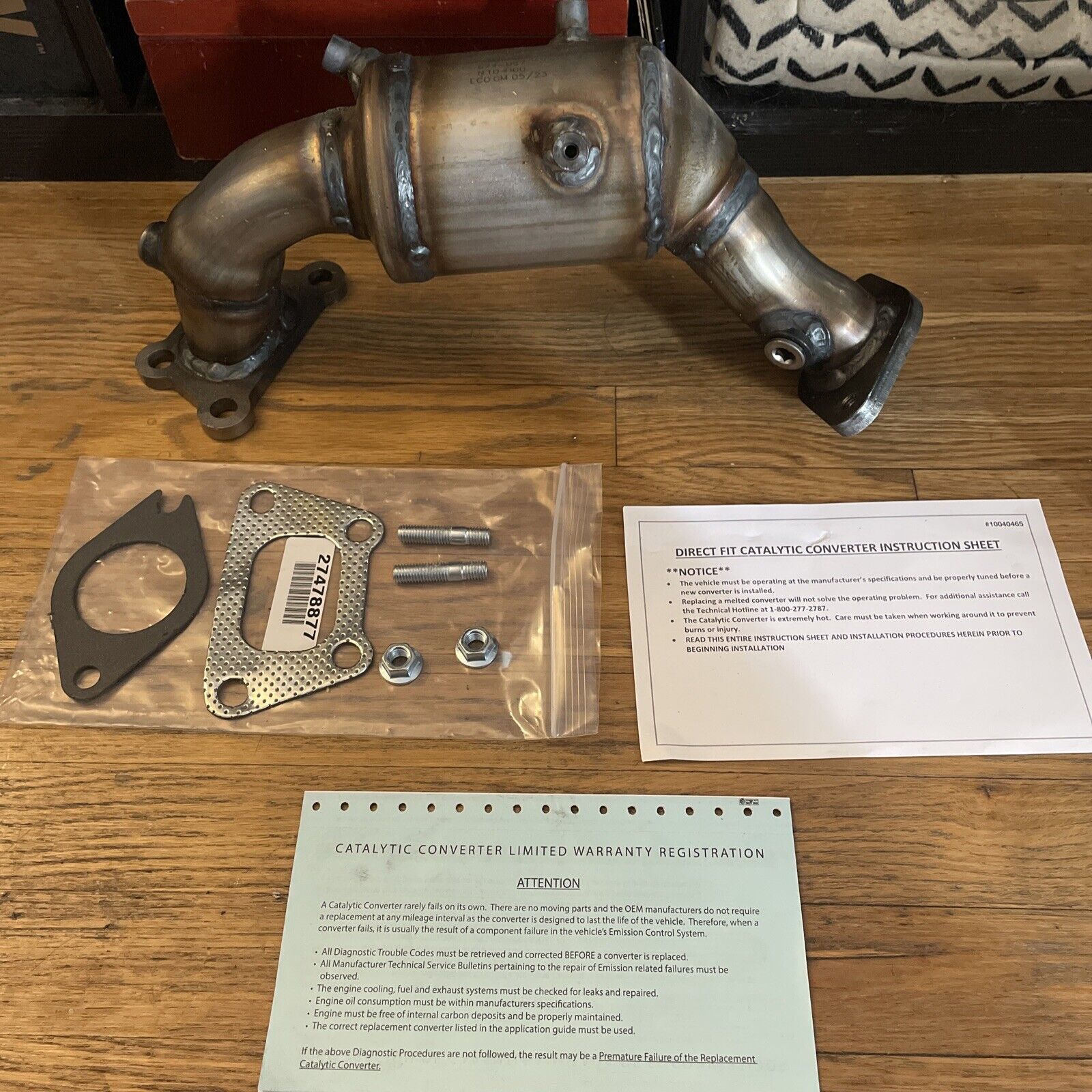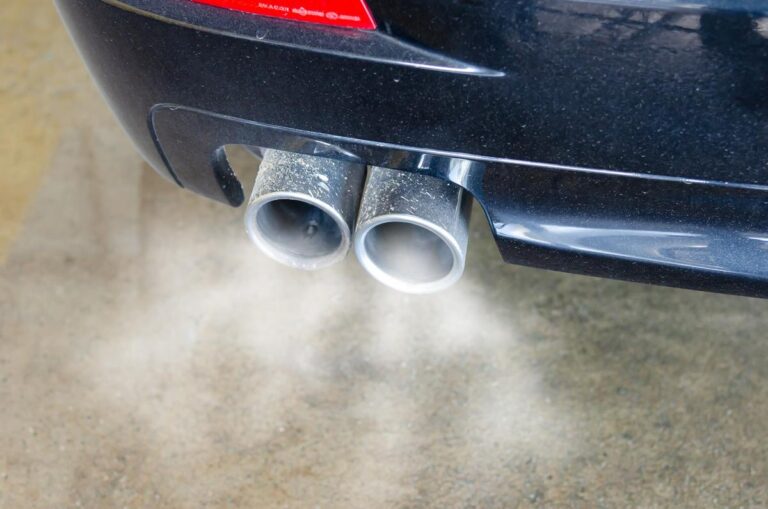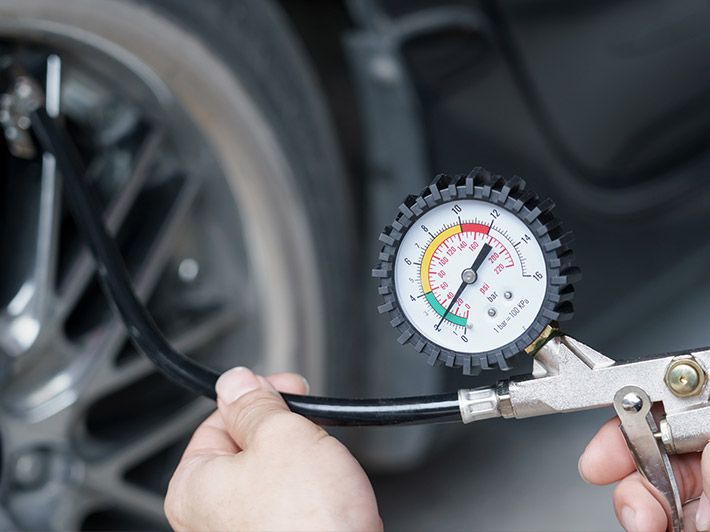What Can I Replace My Catalytic Converter With? Discover the Best Alternatives!
You can replace your catalytic converter with a high-flow catalytic converter or a test pipe. If you are looking for a suitable replacement for your catalytic converter, there are a couple of options available.
You can opt for a high-flow catalytic converter, which is designed to improve exhaust flow and enhance performance without compromising emissions standards. Another alternative is a test pipe, which completely removes the catalytic converter from the exhaust system, allowing for even better flow and potentially increased horsepower.
Both options have their pros and cons, so it’s important to do thorough research and consider factors such as local emissions regulations and personal preferences before making a decision. With the right replacement, you can improve your vehicle’s exhaust efficiency and potentially achieve better performance.
Overview Of Catalytic Converters And Their Importance
Overview of Catalytic Converters and their Importance:
Catalytic converters play a crucial role in reducing emissions from vehicles and are an essential component for maintaining a clean environment.
The Role of Catalytic Converters in Reducing Emissions:
Catalytic converters are designed to convert harmful pollutants into less harmful substances through a series of chemical reactions. They primarily target three main emissions: nitrogen oxides, carbon monoxide, and hydrocarbons. By facilitating these reactions, catalytic converters effectively reduce the harmful effects of emissions on air quality and human health.
Legal Requirements for Functioning Catalytic Converters:
In many countries, including the United States, it is mandatory for vehicles to be equipped with functional catalytic converters. Non-compliance with these legal requirements can result in penalties and fines. Vehicle owners should ensure their catalytic converters are in proper working condition to meet these regulations and contribute to a greener environment.
Signs that Indicate the Need for Replacement:
Over time, catalytic converters can degrade and fail to function effectively. Some signs that indicate the need for replacement include the illumination of the check engine light, reduced engine performance, increased fuel consumption, and foul odor or smoke emitted from the exhaust. Regular inspections and maintenance can help identify these issues early on and prevent further damage to the vehicle’s emission system.
Age And Condition Of The Existing Catalytic Converter
Determining If Replacement Is Necessary Or If Repair Is Sufficient
The age and condition of your existing catalytic converter play a crucial role in deciding whether it needs replacement or if a repair would suffice. Inspecting the converter thoroughly can help you make an informed decision. Check for any visible damage, cracks, or excessive rust. If you notice any of these issues, it’s likely that a replacement is necessary.
In addition to visual inspection, evaluating the remaining lifespan of the catalytic converter is important. A catalytic converter typically lasts between 100,000 to 150,000 miles. If your vehicle has surpassed this milestone or if it’s experiencing frequent check engine light issues related to the catalytic converter, it may be time for a replacement.
Sometimes, repair might be sufficient if the issue is minor or related to oxygen sensors or exhaust leaks. However, it’s crucial to consult with a professional mechanic to assess the situation accurately and determine the most feasible solution for your specific circumstances.
Legality And Compliance With Emission Standards
Replacing a catalytic converter with alternative options should be done in compliance with local laws and regulations regarding emission standards. It is crucial to understand the specific rules and guidelines imposed by your region or country. These regulations may vary and depend on factors such as the type of vehicle, its age, and the area you reside in. Before considering any replacement, it is necessary to check the compatibility of alternative options with the existing regulations. Some potential alternatives include aftermarket catalytic converters, direct-fit catalytic converters, and catalytic converter delete pipes. Ensure that the chosen option meets the emission standards set by the authorities to avoid any legal implications. Remember that non-compliance can result in fines and penalties, as well as negative environmental impacts. Staying informed and adhering to the local laws will contribute to cleaner air and a healthier environment.
Budget And Cost-effectiveness
Replacing a catalytic converter can be an expensive endeavor. However, there are cost-effective alternatives to consider. One option is to repair the existing catalytic converter, which can be more budget-friendly. By identifying and fixing the specific issue causing the malfunction, you can avoid the higher costs associated with a full replacement. Another option is to opt for a aftermarket catalytic converter. These options are often more affordable than original equipment manufacturer (OEM) converters while still meeting the necessary requirements for emissions control. Replacing a catalytic converter with an aftermarket one can save you money while still ensuring compliance with emissions standards. Additionally, proper maintenance and regular inspections can prevent future problems and extend the lifespan of your catalytic converter, which can result in long-term savings. Therefore, it is important to evaluate the cost-effectiveness of different alternatives and consider the long-term benefits they can provide.
Straight Pipe Or Test Pipe
Removing the catalytic converter and replacing it with a straight pipe or test pipe is an option that some car enthusiasts consider. By doing this, they aim to increase the exhaust flow, which can potentially improve the vehicle’s performance. However, it is important to understand the impact that removing the catalytic converter can have on both emissions and vehicle performance.
Emissions: The catalytic converter plays a vital role in reducing harmful emissions from the vehicle’s exhaust. Removing it can lead to higher levels of pollutants being released into the environment, resulting in increased air pollution. This can have significant environmental consequences and may even be illegal in some areas due to emissions regulations.
Vehicle Performance: While removing the catalytic converter may result in a slight increase in horsepower and a louder exhaust sound, it can also have negative effects on the vehicle’s performance. Without the catalytic converter, the engine’s air-fuel mixture may become imbalanced, leading to decreased fuel efficiency, decreased torque, and potential damage to other engine components.
In conclusion, replacing the catalytic converter with a straight pipe or test pipe is a decision that should be carefully considered. It is important to balance the desire for increased performance with the need to reduce emissions and maintain overall vehicle performance. Consulting with a professional mechanic or researching local regulations is advisable before making any modifications to the vehicle’s exhaust system.

Credit: www.elegantthemes.com
Aftermarket Catalytic Converters
Aftermarket catalytic converters are an excellent option for replacing your worn-out or inefficient catalytic converter. These converters are designed to meet the same emission standards as the original equipment manufacturer (OEM) converters but offer additional benefits. When it comes to compatibility, aftermarket converters are available for a wide range of vehicle makes and models, ensuring a perfect fit. As for quality, these converters are made using high-grade materials that can withstand extreme heat and harsh conditions. Many aftermarket converters also offer improved performance, with some models specifically designed to enhance horsepower and torque. Additionally, they are often more affordable than OEM converters, making them a cost-effective solution. Moreover, there are different types of aftermarket converters available to suit your specific needs, such as universal fit and direct fit converters. In conclusion, choosing an aftermarket catalytic converter can provide a reliable and cost-effective solution for replacing your worn-out or failing OEM converter.
High-flow Catalytic Converters
High-flow catalytic converters have gained popularity among car enthusiasts for their ability to increase power and efficiency. Unlike stock converters, which can restrict the exhaust flow and hinder performance, high-flow converters are designed to allow for better airflow, resulting in improved engine performance.
One of the key benefits offered by high-flow converters is their ability to increase horsepower and torque. By minimizing exhaust back pressure, these converters enable the engine to breathe more freely, providing additional power. This is particularly advantageous for performance-oriented vehicles and those looking to enhance their driving experience.
Furthermore, high-flow catalytic converters are known to be effective in reducing emissions. While stock converters focus primarily on emission reduction, high-flow converters strike a balance between emissions control and performance. They are designed with larger catalyst substrates and less restrictive core designs, allowing for better exhaust gas flow without sacrificing the ability to reduce harmful emissions.
In conclusion, high-flow catalytic converters offer a range of benefits, including improved power and efficiency, while still effectively reducing emissions. For those looking to upgrade their vehicle’s performance without compromising environmental responsibility, high-flow converters are a viable option.
Catalytic Converter Substitutes
Catalytic Converter Substitutes
Alternative materials and technologies have been developed as substitutes for traditional catalytic converters. These options aim to meet the same goal of reducing harmful emissions from vehicles. Some of the substitutes investigated include:
- Non-Catalytic Converters: These devices use a different approach to reduce emissions, such as metal plates or fine wires that create turbulence in the exhaust flow to enhance oxidation and reduction reactions. While they can provide some emission control, they may not be as efficient as catalytic converters.
- Hydrogen Fuel Cells: Hydrogen fuel cells can be used as an alternative power source for vehicles. They convert hydrogen and oxygen into water, with only water vapor as the byproduct. However, the infrastructure for hydrogen fuel cells is still developing, and widespread adoption may take time.
- Electric Vehicles: Electric vehicles rely on electricity as their primary power source, eliminating the need for a traditional catalytic converter. They produce zero emissions during operation, helping to reduce air pollution caused by internal combustion engines.
- Legal Considerations: Before considering any substitute, it’s crucial to investigate the effectiveness and legality of these options in your specific region. Conforming to local emission regulations is essential to ensure compliance and avoid penalties.
Frequently Asked Questions On What Can I Replace My Catalytic Converter With
What Can I Do Instead Of Replacing Catalytic Converter?
Instead of replacing the catalytic converter, you can try cleaning it or using a catalytic converter cleaner. This can help remove carbon deposits and improve its performance. Additionally, you may consider using fuel additives or getting a professional emission test and inspection to identify any underlying issues.
Is There An Alternative To Catalytic Converter?
Yes, there are alternatives to catalytic converters, such as muffler delete pipes or aftermarket high-flow catalytic converters. These options provide different levels of emissions control and performance.
Can You Replace A Catalytic Converter With A Regular Muffler?
No, you cannot replace a catalytic converter with a regular muffler. A catalytic converter has a specific function to reduce emissions, while a muffler is designed to minimize exhaust noise. They serve different purposes and cannot be used interchangeably.
What Is The Cheapest Way To Fix Catalytic Converter?
The cheapest way to fix a catalytic converter is to get it professionally cleaned or unclogged. This is a more affordable option compared to replacing the entire converter, which can be quite expensive. Professional cleaning helps restore the converter’s functionality, reducing emissions and improving vehicle performance.
Conclusion
To conclude, replacing your catalytic converter is not a decision to be taken lightly. It is essential to choose a suitable alternative that complies with emission regulations and meets your specific needs. Whether you opt for a direct-fit replacement or explore aftermarket options, remember to consider factors like performance, budget, and environmental impact.
Take your time, do thorough research, and consult with experts to ensure a smooth and satisfactory replacement process. Keep in mind that maintaining your vehicle’s catalytic converter is crucial for a greener and cleaner future.








